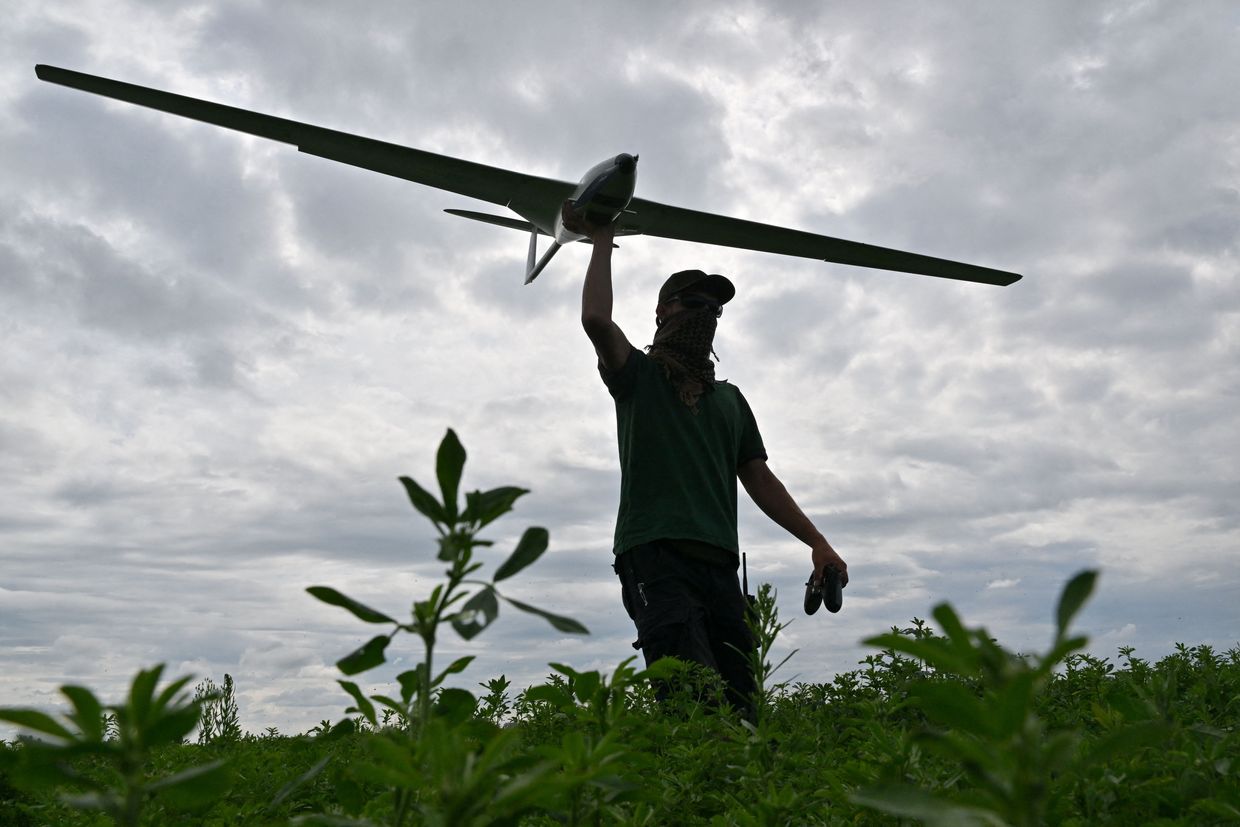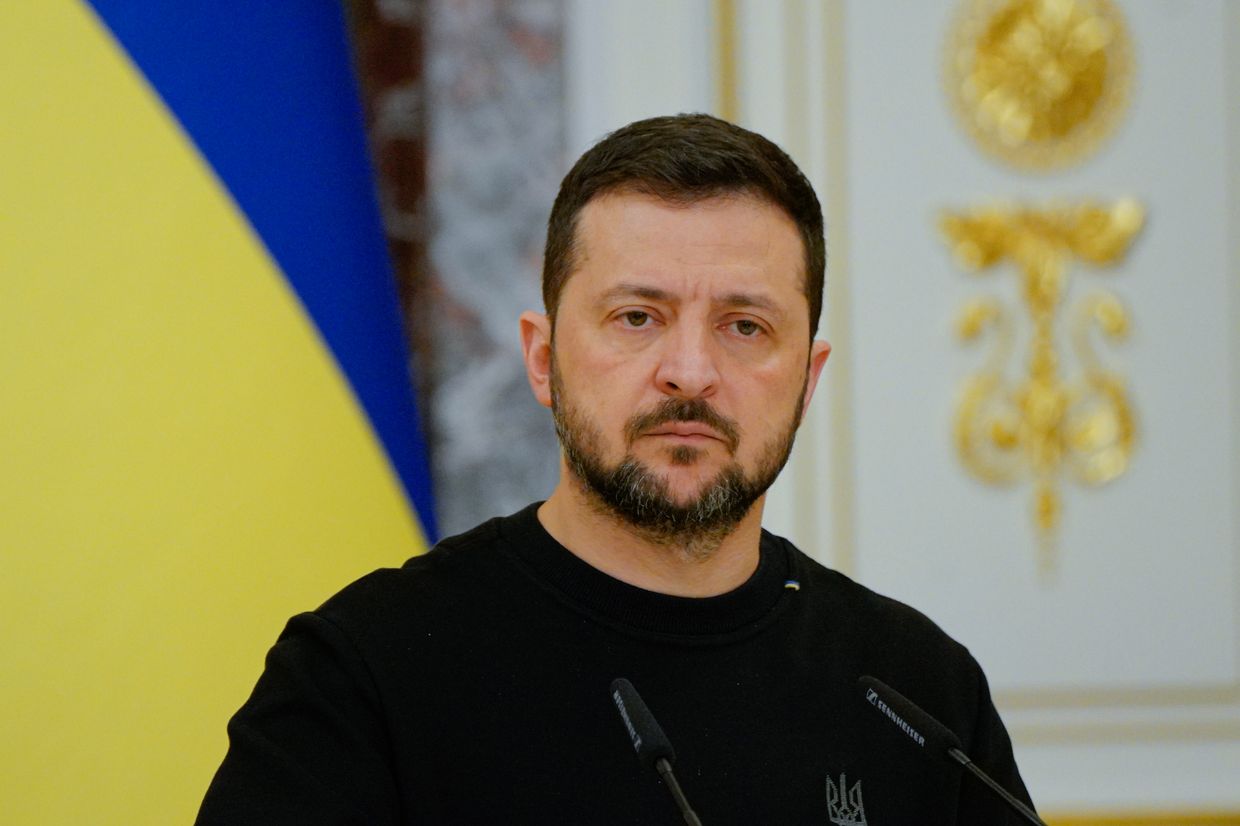Ukraine’s low-budget tech wizardry has stunned Western audiences since the war’s outset. Soldiers operating out of front-line garages have modified donated artillery, rehabbed captured weapons, amped up off-the-shelf drones, and coded software to streamline it all.
Given all the attention, a number of enterprising Ukrainians have turned their efforts into standalone businesses, giving rise to a new generation of military technology.
As Russia’s war carries on into its third year, the Ukrainian government has tried to promote investment both from abroad and domestically into the defense tech startups for its current wartime arsenal and a prospective peacetime cash cow — particularly as global venture capital has gone gung-ho on weapons.
But money has been painfully slow to come in from abroad. The average weapons firm in Ukraine faces stout financial barriers from all sides — reactionary policy at home where the central bank has put measures in place to prevent capital flight, and abroad, where major insurers and investors won’t touch either Ukraine or defense.
Powder burns
Foreign investment into Ukraine’s defense tech startups over the past year totaled a little over $9 million, according to “preliminary estimates” from Brave1 — a government defense cluster that bridges the Defense Ministry and the startup-focused Digital Transformation Ministry — shared with the Kyiv Independent.
For comparison, U.S. defense tech unicorn Anduril announced a fresh $1.5 billion round at the beginning of August in the largest defense tech funding round ever publicized.
“So far, we’ve seen zero interest from traditional venture capitals in putting a dollar into Ukraine,” says Perry Boyle, an American investor in Ukrainian weapons start-ups.
Boyle’s project, MITS Capital, invests in and fosters a stable of Ukrainian weapons start-ups, the first five of which “graduated” on Aug. 22. He freely acknowledges that it’s a risk-on approach that’s anathema to most foreign investors.
The result of minimal money from abroad is a financial barricade for those companies. “They’re not getting insured and they’re not getting financed,” says Boyle.
The consequences are huge for many of these startups. “I would say that in half a year, there will be from two to three times fewer startups in defense tech because of that reason,” says Ivan Kaunov, a drone pilot in the Ukrainian military and founder of Buntar Aerospace, which makes high-end drones thanks to rare success in wooing foreign money.

“Almost all startups have a problem with the front-line check,” says Kateryna Bezsudna, referring to the requirement of demonstrating a prototype at the actual front before being able to sell to Ukraine’s Defense Ministry — the only big customer Ukrainian defense tech startups are allowed to sell to.
Without foreign investment, it’s very tough to get enough money to build a prototype that they can demonstrate in battle, without which they can’t sell their product.
“They couldn’t get money for the first prototype, so they had to pitch the whole time in order to get that first prototype to pass the front-line check,” Bezsudna says.
Bezsudna was formerly with Brave1 before joining Kaunov to found Buntar, which she said managed to raise $300,000 before fielding its first prototype. Bezsudna now runs Defense Builder, an accelerator trying to smooth the path for next-generation Ukrainian weapons startups.
Underwriting under fire
“For many investors — especially conservative investors from Western countries — it's a big question mark to invest in Ukraine nowadays during the full-scale invasion because the risks are tremendous,” says Halyna Yanchenko, a Ukrainian lawmaker from President Volodymyr Zelensky’s Servant of the People party.
The first problem, says Yanchenko, is that military tech startups can’t get insurance for the ever-present risk of wartime destruction.
Investors want their holdings in Ukraine underwritten — meaning an outside institution takes on at least part of the financial risk of a warehouse or factory getting blown up in an airstrike or shootout, in exchange for premiums.
Very few private financiers offer that kind of insurance to firms operating in Ukraine. When it comes to money leaving Western hands for Ukrainian companies, the underlying war risk insurance is largely the province of government agencies.
Organizations offering war risk insurance are usually governmental and typically insure companies from their own countries. The focus is usually on the largest and most politically connected of those firms. If that insurance goes to Ukrainian entities, first in line are enterprises owned by the Ukrainian state.

One of the largest foreign insurers focusing on Ukraine’s private sector is the U.S. International Development Financing Corporation, or DFC, which as of July posted about $1.6 billion in holdings in Ukraine.
“About half of DFC’s portfolio in Ukraine is for political risk insurance,” a representative wrote to the Kyiv Independent, clarifying that the DFC includes war risk within that category.
The DFC, however, specifically bars insurance to weapons and even “dual-use” production — like cargo drones, which could carry mail just as easily as explosives. Private financiers are no bolder.
Young Ukrainian companies typically don’t hold up production waiting for that sort of insurance on their physical assets — a must for the more established and risk-averse foreign venture capital firms before handing over cash.
“I don’t believe anyone will give (war) insurance. It's easier for you just to be wise in your actions and approach to how you set up your manufacturing,” says Kaunov.

“For example, we have our manufacturing facilities in five different places, and all of them are in basements. So instead of having one huge hangar, we use five different small locations where we split the manufacturing process.”
“We discuss war as — for our business — the secret sauce, not as a risk,” says Misha Rudominsky, the founder of Himera, another of the small set of Ukrainian companies to secure funding from the West. Named for the mythical Greek hybrid, Himera makes inexpensive encrypted walkie-talkies that are taking a bite out of the market share of Motorola on the Ukrainian front.
“We move very fast,” says Rudominsky of trying to convince risk-averse foreign investors. “If they're not into Ukraine, we say, ‘Okay, we'll move on.’ I'm not trying to persuade anyone.”
Rudominsky’s attitude is a classic start-up mentality. But it features a twist, given that Ukraine’s financial system remains heavily cinched off from the rest of the world.
Trenches and lock-ups
Ukraine’s Central Bank administers lock-ups on equity inside of Ukraine as part of broad capital controls that for two years have stabilized a hryvnia that plunged at the war’s outset.
On the plus side for Ukrainian companies, the Central Bank laid down at least some of its arms in May. New rules announced by Andriy Pyshny, the bank’s head, in particular, eased some payments to outside vendors.
A representative for the bank told the Kyiv Independent that 233 Ukrainian companies have been able to start paying interest on old loans, while 255 have been able to bring money from investments abroad back into Ukraine — the latter number being capped at 1 million euros per month.
Startup founders report outside payments remaining a manageable pain, requiring additional back and forth of verifying documents on basically any transaction abroad. It is, they say, at least a reliable inconvenience at this point.
But the bank has yet to unlock payments on money going in the other direction. Those who invest in Ukraine aren’t going to be able to get their money out via what one might call normal channels for the foreseeable future, as the Central Bank remains fearful of a mass sell-off of the hryvnya.

The Ukrainian weapons startups seeing success in wooing foreign money are as a rule not bringing all of it back into Ukraine.
“Almost all of our teams have incorporation outside of Ukraine. I mean abroad, like Estonia, the U.K., the U.S.,” says Bezsudna.
It’s a practice that Boyle advises for his portfolio companies and a trend that the Kyiv Independent has previously reported as due to export controls. Even the most patriotic Ukrainian firms depend on access to foreign banking and legal systems.
But Ukrainian firms then hedge their bets on how much cash and, increasingly, physical property, to leave in Ukraine.
Arms stealers
Ukrainian firms building bases abroad risk a steady leak of all of the capital from hard-earned developments on Ukraine’s front lines out of the Ukrainian economy for good.
Ukrainian regulators are left asking the question: “How do you turn it into money?” says James Lewis, director of the Technology and Public Policy Program at the Center for Strategic and International Studies in D.C.
Lewis notes that the major U.S. weapons companies are eager to take control of technology developed in Ukraine without handing over the core resources to Ukrainians, which further threatens the good that the new industry can do domestically.
Acquisitions are “touchy everywhere,” Lewis says, as nobody wants to sell off their military infrastructure. “A better way is to have people invest in the company. That way you retain ownership.”
Defense startups are spiking as an area of interest for venture capital globally. A recent Pitchbook report broke down global venture capital’s recent turn to weapons, noting that “this stability in defense tech investing contrasts with the broader VC market’s decline.”
It’s a trend that derives heavily from interest in the war in Ukraine, with maybe no clearer example than Eric Schmidt, a former CEO of Google, and his turn to “arms dealer” in the form of AI-powered drones that he says his newest project will send to Ukraine — but not be built there.
“The (drone) companies that are popping up here in the U.S., they are at least claiming that their technology is being used in Ukraine,” says Ali Javaheri, the Pitchbook analyst who authored that report. As to whether he knows of any U.S. companies actually investing in Ukrainian drone makers: "No, I do not. I know a few Ukrainians based in Europe who want to start.”

Allowing this new industry to slip away into the U.S. and EU locks Ukraine out of long-term profits, allowing the local economy to remain something of a raw material supplier.
Historically, that has included everything from wheat and sunflower oil to metal ores to, more recently, tech labor largely in service to Silicon Valley. In the case of weapons technology abroad, that raw material is Ukrainian bloodshed.
Weapons innovation at a high level becomes an intellectual exercise; in practice, and particularly in Ukraine, where it’s happening incredibly quickly, that innovation is based on constant ongoing experimentation with live human subjects.
From his home in Ketchum, Idaho, Perry Boyle summarizes his fear: “Do NATO and the US see Ukraine as a potential partner in democracy, or do they view it as a colony to be exploited?”














